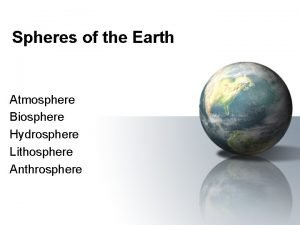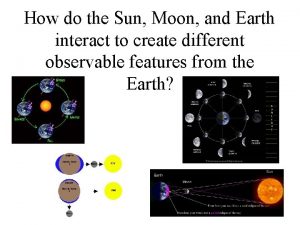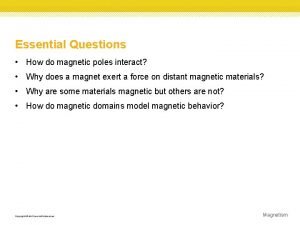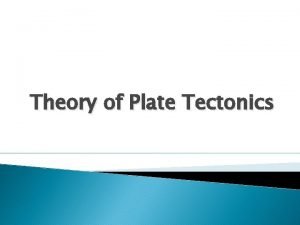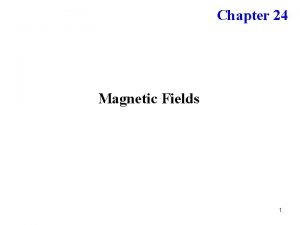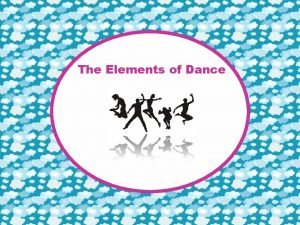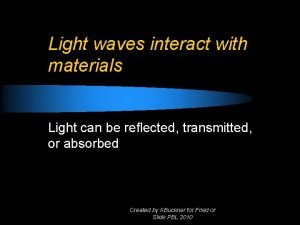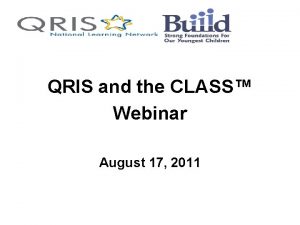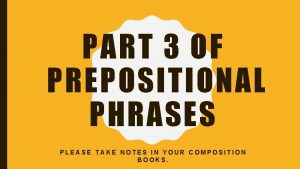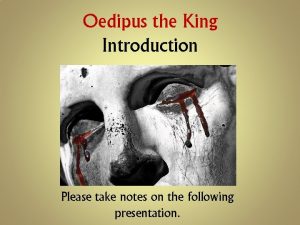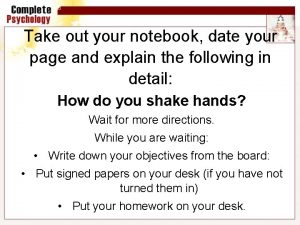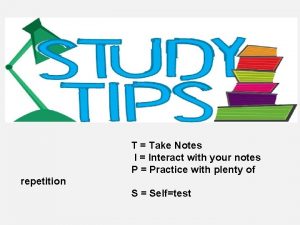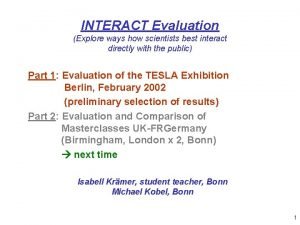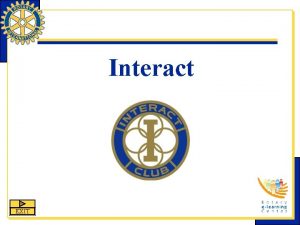T Take Notes I Interact with your notes




































- Slides: 36

T = Take Notes I = Interact with your notes P = Practice with plenty of repetition S = Self-test

CHAPTER 6 SESTION 1: INTRODUCTION TO CHEMICAL BONDING

ESSENTIAL QUESTIONS • How are chemical bonds formed? • Why do atoms form bonds? • What do dots on a Lewis dot diagram represent? • How do you know where to create a bond on a Lewis dot diagram? • What is the octet rule?

COMPOUNDS • A compound is a substance that contains atoms of two or more different elements that are chemically bound together. • A chemical bond is a strong attraction between atoms that hold compounds together.

WHAT ARE CHEMICAL BONDS? • A chemical bond is a relatively strong attraction between a pair of electrons in neighboring atoms. • The diagrams below shows four different ways to represent a methane molecule (CH 4).

HOW CHEMICAL BONDS FORM • A diatomic molecule is composed of only two elements. • As two atoms get close to each other, the attraction between one atom's valence electrons and the nucleus of the other atom creates a slight polarization of each electron cloud. • When two atoms get too close to each other, the force between them becomes repulsive. • A chemical bond forms at this equilibrium distance as seen in the diagram.

BONDING AND ELECTRON CONFIGURATIONS • Atoms bond to form complete energy levels. • The diagram below shows how both elements can reach the lowest-energy condition of having full energy levels by sharing two pairs of electrons. Each shared pair represents a chemical bond.

ISOELECTRONIC PARTICLES • Different elements with the same electron configuration are isoelectronic.

THE OCTET RULE • The rule that compounds form so as to give every atom eight valence electrons is called the octet rule. • Eight valence electrons completely fill the s and p orbitals. • Full energy levels are very stable.

SOLVED PROBLEM Use the octet rule to determine how many atoms of fluorine and carbon will bond together. Relationship Atoms combine so each has an octet of valence s electrons. Solve Fluorine has an electron configuration of 1 s 22 p 5 and therefore has seven valence electrons. It only needs one more electron to reach octet. Carbon has four valence electrons. Since carbon has the greater number of single electrons, it will add as many fluorine atoms as possible to reach octet. It needs four more electrons to reach octet. Answer Four F atoms combine with 1 C atom

BOND SUMMARY Ionic Bonding between Types of Elements Metal plus Nonmetal Electrons Physical Properties: Melting, Boiling, etc Chemical Properties: Conduct Electricity Soluble in Water Transfer of electrons High Yes (when dissolved or molten/liquid) Covalent Nonmetals only Metallic Metals only Freely moving in a Sharing of electrons sea of electrons Low No Lowest Yes because of free mobile electrons Yes Sometimes No Ions or crystalline Molecules Alloys

LIGHT ELEMENTS • The octet rule is really a "duet" rule for hydrogen, helium, lithium, and beryllium. • These elements are Isoelectronic with He and only need two electrons to complete their energy levels.

WRITTEN CHEMICAL FORMULAS • Compounds have a unique chemical formula that tells you how many of each kind of atom are in the compound.

DRAWINGS OF FORMULAS • In drawings, atoms are in their elemental or atomic form if they are separated and there are no lines connecting them. • If atoms overlap with each other, or they are connected with a solid line, then they are combined as a compound. • The solid line represents chemical bonds.

REPRESENTING MOLECULES • In chemistry, structure means how the atoms are connected to each other.

LEWIS DOT DIAGRAM AND ELECTRON PAIRS • A Lewis dot diagram is convenient way to represent the idea of paired valence electrons and the stable arrangements of eight or two • Sulfur is shown below; the element symbol is written in the center and the valence electrons are written around the symbol • The pairing of dots in Lewis dot diagrams reflect Hund's rule. • Only the unpaired electrons are available for making chemical bonds.

LEWIS DOTS AND MOLECULAR STRUCTURE • Consider a molecule of ethanol (C 2 H 5 OH). • Each carbon atom is surrounded by eight dots (4 bonds). • Each oxygen atom is also surrounded by eight dots (two bonds). • Each hydrogen atom in the molecule contributes its single 1 s valence electron and forms one bond (two dots). • All of the atoms have complete energy levels.

SOLVED PROBLEM Draw the Lewis dot diagram for one possible structure for propene C 3 H 6. Draw Lewis dot diagrams for one C atom and one H atom: Solve Carbon has more single electrons so bond atoms to it first. Connect all 3 C atoms. Now add the 6 H atoms. Move leftover single electrons into a double bond. Answer

STRUCTURAL DIAGRAMS • In a structural diagram, a line represents a bonded pair of electrons between atoms. • It is easier to see bonds in structural diagrams.

DOUBLE AND TRIPLE BONDS • To meet the octet rule each atom in O 2 must share two pairs of electrons with its partner in a double bond. • Each nitrogen atom in N 2 must share three pairs of electrons in a triple bond. • Many molecules may contain a single bond together with double or triple bonds.

POST-ASSESSMENT • What is the difference between an element and a compound?

POST-ASSESSMENT • What is the difference between an element and a compound? • An element is one or more of the same kind of atom but a compound is made of 2 or more different elements chemically bound together.

POST-ASSESSMENT • How are chemical bonds formed?

POST-ASSESSMENT • How are chemical bonds formed? • Chemical bonds are formed when atoms share or exchange their valence electrons to get a noble gas configuration or octet.

POST-ASSESSMENT • Why do atoms form bonds?

POST-ASSESSMENT • Why do atoms form bonds? • Atoms form chemical bonds to get a more stable electron configuration.

POST-ASSESSMENT • What are the parts of a chemical formula?

POST-ASSESSMENT • What are the parts of a chemical formula? • There are chemical symbols and subscripts, the subscripts let you know how many of each atom there are in the formula.

POST-ASSESSMENT • What do dots on a Lewis dot diagram represent?

POST-ASSESSMENT • What do dots on a Lewis dot diagram represent? • Valence electrons.

POST-ASSESSMENT • How do you know where to create a bond on a Lewis dot diagram?

POST-ASSESSMENT • How do you know where to create a bond on a Lewis dot diagram? • Unpaired electrons are available to form bonds.

POST-ASSESSMENT • What is the octet rule?

POST-ASSESSMENT • What is the octet rule? • Atoms surrounded with 8 valence electrons are stable.

POST-ASSESSMENT • What is the value of having several different molecular models?

POST-ASSESSMENT • What is the value of having several different molecular models? • If you want to know different information about a molecule, you should choose the model that best represents that information, such as what the molecule looks lie in 3 D space or simply in what order the atoms are arranged.
 Take a bus or take a train
Take a bus or take a train Oblate sheroid
Oblate sheroid How does biosphere interact with hydrosphere
How does biosphere interact with hydrosphere Member of the same species
Member of the same species Parasitism
Parasitism What season is this
What season is this Earth four spheres
Earth four spheres How do magnetic poles interact
How do magnetic poles interact How do earth's spheres interact
How do earth's spheres interact Tectonic plates interact at places called plate
Tectonic plates interact at places called plate Interact club handbook
Interact club handbook Organizing students to interact with new content
Organizing students to interact with new content How do similar (s-s or n-n) magnetic poles interact?
How do similar (s-s or n-n) magnetic poles interact? How does mirabella interact with the rest of the pack
How does mirabella interact with the rest of the pack What is human society
What is human society Duties of sergeant-at arms in rotary
Duties of sergeant-at arms in rotary Answer
Answer Elements of dance
Elements of dance Interactional vandalism sociology examples
Interactional vandalism sociology examples Interact
Interact Interact
Interact Body interact answers
Body interact answers Teachstone class video library
Teachstone class video library Kesler science sound waves answer key
Kesler science sound waves answer key Interact
Interact Give us your hungry your tired your poor
Give us your hungry your tired your poor To take notes in spanish
To take notes in spanish Sit down and take notes
Sit down and take notes Take prepositional phrase
Take prepositional phrase Active note taking
Active note taking Oedipus the king introduction
Oedipus the king introduction Take out your notebook
Take out your notebook Take out your homework
Take out your homework Contingency measures during workplace accidents
Contingency measures during workplace accidents Take out your notebooks
Take out your notebooks The race
The race How to take care of your nervous system
How to take care of your nervous system


